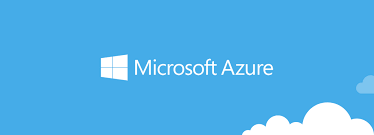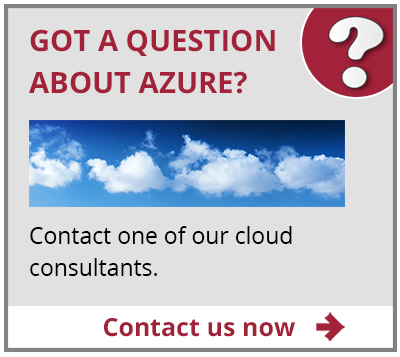 In “Part 1” and “Part 2” of this blog series on Microsoft Azure, I’ve covered frequently asked questions on security, migration best practices and how to get started with a pilot. Here, in this third and final installment, I share common questions on predicting costs, deployment “gotchas” and competitive offerings.
In “Part 1” and “Part 2” of this blog series on Microsoft Azure, I’ve covered frequently asked questions on security, migration best practices and how to get started with a pilot. Here, in this third and final installment, I share common questions on predicting costs, deployment “gotchas” and competitive offerings.
Q. How can I estimate my monthly/yearly Azure costs?
A. Azure has a pricing calculator service which allows you to add any product that you envision your cloud having, and then it will estimate your costs for you. You can see and try the calculator out for yourself by clicking here.
Q. What are the unexpected “gotchas” in a typical Azure deployment?
A. There are a few problems that can occur occasionally during a typical Azure deployment. One of the more common problems is being unable to access your website, but your deployment has started and all role instances are ready. Another issue is sometimes your role instances recycle without your doing anything. A final problem is that you cannot perform a VIP swap and you receive an error. All of these issues have pretty simple fixes, and you can find those in this link.
Q. How does Azure differ from Amazon or Google?
A. Azure has made a name for itself in the cloud industry by putting together a great package of offerings as well as a very user-friendly user interface (UI). Some of the unique features Azure offers includes: Service Fabric, Container Service and Batch Services. Azure’s UI is considered the most user-friendly compared to AWS and Google because of how easy it is for a user with any level of experience to build a functional platform. Not only this, but Azure has matured very rapidly and is almost at the same level as AWS in terms of service provisioning. AWS is moving towards products which free you from having to buy by-the-hour computing, but is not there yet. To date, Google Cloud has not followed a similar model to AWS and Azure, and instead they cover a much smaller set of services.
Q. How can a managed services provider ease the move to Azure?
A. Managed services providers can ease the move to Azure in a number of ways. First off, they are able to work in your environment for a discovery period which will allow them to figure out the most effective way to migrate your data from wherever it may be to Azure. After this, they can perform the migration for you. Depending on where the data is being moved from, this can be done through automation or a third-party. After your data has been migrated to Azure, they can further implement the solution for you




